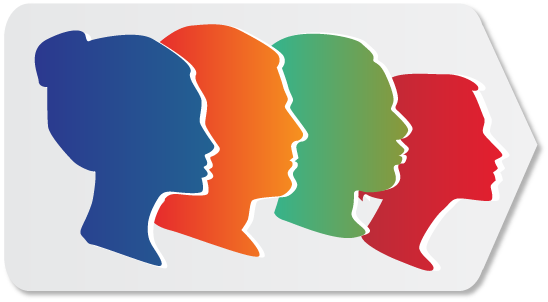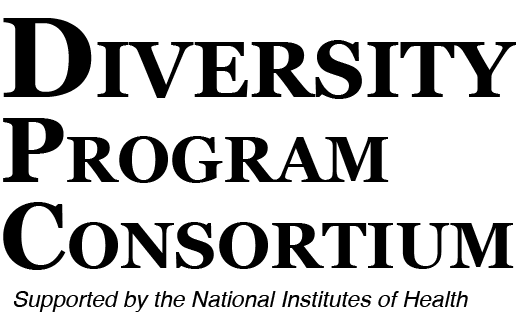



DPC Hallmark STU-1, STU-2, STU-3
By Krystle Cobian
January 2021
Imposter phenomenon is the belief that one’s successes are due to chance rather than competence, thus leading to a fear of being perceived as a fraud (Clance & Imes, 1978; Clance, 1985). The term came from early studies examining how women who had achieved external levels of success often felt like “imposters” in the workplace. Clance and colleagues (1978) observed that women often attributed their success to luck, and attributed their failure to their innate ability, whereas the opposite was more often true for men. Later research on the imposter phenomenon suggests that people of all gender identities and fields can feel like imposters. In the literature, both imposter “phenomenon” and “syndrome” are used to describe the same concept.
Researchers have examined the imposter phenomenon and its relationship to academic success and self-perceptions (Harvey, 1981; Thompson, Davis, & Davidson, 1998). For example, those with higher scores on self-assessed feelings of being an imposter tend to report higher negative emotions (e.g., anxiety, guilt, and humiliation) after an academic failure, and tend to overgeneralize one instance of failure to their overall self-concept (Thompson et al., 1998). Research indicates that imposters may not rate themselves highly on self-appraisal measures such as self-esteem and self-perception (Leary, Patton, Orlando, & Funk, 2000). Those who feel like imposters may feel the need to achieve in order to earn the approval necessary to maintain their positive self-esteem, while at the same time having a strong need to protect themselves from criticism (Langford & Clance, 1993). Yet, Leary et al. (2000) also noted that while instruments to measure the imposter phenomenon are validated (Chrisman et al., 1995), how imposter phenomenon is assessed may be limited; survey items used to measure feelings of fraudulence ask participants to rate how “most other people” might perceive them. Understanding how different audiences and contexts might impact the extent to which one feels like an imposter, and the extent to which experiences of imposter phenomenon can influence self-efficacy and science identity, can help pinpoint ways to mitigate imposter phenomenon. Thus, research on how contextual factors such as the social identities held by the imposter (e.g. underrepresented groups in the biomedical disciplines) coupled with the audience (e.g. social identities and/or authority of mentors and faculty in biomedicine), is also critical to examine in order to understand how the imposter phenomenon manifests for individuals on a biomedical career pathway.
When an individual is already fearful of being called a fraud, this fear might be amplified for individuals whose identities are historically incongruent with who is seen as knowledgeable and talented in biomedical science fields. For example, one study examined 959 graduate students and professionals in science, technology, engineering, mathematics, and medical fields (STEMM) and categorized the types of imposter feelings based on levels of fear and self-doubt. The researchers’ findings suggest that imposter feelings can vary in STEMM, and that fear may be more of a defining feature of being an imposter (Lee et al., 2020). Students of color, women, first-generation college students, and students who hold multiple marginalized identities may end up in spaces that trigger one’s fear of being a fake (Collins et al., 2020), or perhaps living up to an underrepresented group’s stereotypes. The latter is also known as stereotype threat (Steele, 1997). Within biomedical settings, for example, feeling “othered” might be triggered by a lack of guidance from mentors with a social identity, fears of isolation or exclusion, issues with self-confidence issues, and being singled out or misunderstood (Chakraverty, 2020b). A related concept of internalized racism may also play a role in experiences of the imposter phenomenon for faculty of color (Dancy & Jean-Marie, 2014). More research must be conducted to gain a nuanced understanding of how the biomedical training environment impacts underrepresented groups’ extent to which they feel like imposters, especially since the imposter phenomenon is connected to anxiety, depression, and likelihood of taking less risks and opportunities due to fear of failure.
Imposter phenomenon may be reduced by interventions at both the individual and institutional levels. Aspects of the college environment may serve as protective factors to mitigate the likelihood of underrepresented groups feeling fraudulent in their environments. In a study of 161 Black and Hispanic undergraduate students, researchers examined predictors of high levels of imposter phenomenon and found that students with high levels of affirmation and belonging in one’s racial/ethnic group, as well as students with high ratings of one’s ability to control one’s environment were less likely to have high levels of imposter phenomenon (Peteet, Montgomery, & Weekes, 2015). Appropriate interventions may need to address incidents and environments that trigger the imposter phenomenon. For example, public recognition, comparing oneself with others, and asking for help from peers and faculty can be triggers of experiencing imposter phenomenon for Black biomedical trainees (Chakraverty, 2020a). For faculty in science and social science fields, recognition in the form of successes, having one’s expertise questioned by others, comparing oneself to colleagues, and keeping up with scholarly productivity were identified as triggers for experiencing the imposter phenomenon (Hutchins & Rainbolt, 2016).
When viewing imposter phenomenon as a “symptom” of a larger systemic issue of inequity in biomedical training (Chakraverty, 2020b; Mullangi & Jagsi, 2019), system-wide interventions may be important to reduce the negative consequences of individuals experiencing imposter phenomenon in the biomedical sciences. At the institutional level, faculty behaviors and other student environments can reduce the imposter phenomenon in underrepresented trainees through triad mentorship models (Chakraverty et al., 2018), and providing additional and affirming support to trainees during academic transitions where they may be more likely to feel alienated and othered (Dabney et al., 2016). More research on institution-wide interventions is needed in order to support biomedical career aspirants who experience imposter phenomenon.
The Diversity Program Consortium (DPC) aims to enhance the diversity of biomedical researchers at all levels of the biomedical career pathway. To measure progress toward this aim, the DPC developed Hallmarks of Success. Understanding the role of imposter phenomenon is related to the DPC’s goals because of its connection to internal perceptions of ability (STU-1: academic self-efficacy; STU-2: self-efficacy as a researcher) and identity (STU-3: high science identity). We know that imposter phenomenon impacts undergraduates, graduate students, postdoctoral scholars, and early-career researchers and may disproportionately impact individuals with multiple social identities that are currently underrepresented in the biomedical fields. Enhancing our understanding of how to mitigate imposter phenomenon in order to support biomedical researchers in achieving their goals can inform future interventions and programs aimed at enhancing diversity in biomedicine.
References
Chakraverty, D. (2020a). PhD student experiences with the impostor phenomenon in STEM. International Journal of Doctoral Studies, 15(1), 159-180.
https://doi.org/10.28945/4513
Chakraverty. D. (2020b). The impostor phenomenon among Black doctoral and postdoctoral scholars in STEM. International Journal of Doctoral Studies, 15,
433-460. https://doi.org/10.28945/4613
Chakraverty, D., Jeffe, D. B., & Tai, R. H. (2018). Transition experiences in MD–PHD programs. CBE—Life Sciences Education, 17(3), ar41. https://doi.org
/10.1187/cbe.17-08-0187
Chrisman, S. M., Pieper, W. A., Clance, P. R., Holland, C. L., & Glickauf-Hughes, C. (1995). Validation of the Clance imposter phenomenon scale. Journal of
Personality Assessment, 65(3), 456-467.
Clance, P. R. (1985). The imposter phenomenon: When success makes you feel like a fake. Toronto: Bantam Books.
Clance, P. R., & Imes, S. A. (1978). The imposter phenomenon in high achieving women: Dynamics and therapeutic intervention. Psychotherapy: Theory, Research
& Practice, 15(3), 241-247.
Collins, K. H., Price, E. F., Hanson, L., & Neaves, D. (2020). Consequences of stereotype threat and imposter syndrome: The personal journey from STEM-
Practitioner to STEM-educator for four Women of Color. Taboo: The Journal of Culture and Education, 19(4), 10.
Dabney, K. P., Chakraverty, D., Hutton, A. C., Warner, K. A., & Tai, R. H. (2016). The bachelor’s to PhD transition: Factors influencing PhD completion among
women in chemistry and physics. Bulletin of Science, Technology & Society, 36(4), 203-210. https://doi.org/10.1177/0270467617710852
Dancy, T. E., & Jean-Marie, G. (2014). Faculty of color in higher education: Exploring the intersections of identity, impostorship, and internalized racism.
Mentoring & Tutoring: Partnership in Learning, 22(4), 354-372
Dukes, A. (2020). How to better support Black trainees in the biomedical sciences. Nature Medicine, 1-1. https://doi.org/10.1038/s41591-020-1101-3
Ewing, K. M., Richardson, T. Q., James-Myers, L., & Russell, R. K. (1996). The relationship between racial identity attitudes, worldview, and African American
graduate students’ experience of the imposter phenomenon. Journal of Black Psychology, 22, 53–66.
Hutchins, H. M., & Rainbolt, H. (2017). What triggers imposter phenomenon among academic faculty? A critical incident study exploring antecedents, coping, and
development opportunities. Human Resource Development International, 20(3), 194-214
Langford, J., & Clance, P. R. (1993). The imposter phenomenon: recent research findings regarding dynamics, personality and family patterns and their implications
for treatment. Psychotherapy: Theory, Research, Practice, Training, 30(3), 495.
Leary, M. R., Patton, K. M., Orlando, A. E., & Wagoner Funk, W. (2000). The impostor phenomenon: Self‐perceptions, reflected appraisals, and interpersonal
strategies. Journal of Personality, 68(4), 725-756.
Lee, H., Anderson, C. B., Yates, M. S., Chang, S., & Chakraverty, D. (2020). Insights into the complexity of the impostor phenomenon among trainees and
professionals in STEM and medicine. Current Psychology, 1-12.
Mullangi, S., & Jagsi, R. (2019). Imposter syndrome: treat the cause, not the symptom. Journal of the American Medical Association, 322(5), 403-404.
Peteet, B. J., Montgomery, L., & Weekes, J. C. (2015). Predictors of imposter phenomenon among talented ethnic minority undergraduate students. The Journal of
Negro Education, 84(2), 175-186.
Steele, C. M. (1997). A threat in the air: How stereotypes shape intellectual identity and performance. American Psychologist, 52, 613-629.
Thompson, T., Davis, H., & Davidson, J. (1998). Attributional and affective responses of impostors to academic success and failure outcomes. Personality and
Individual Differences, 25(2), 381-396